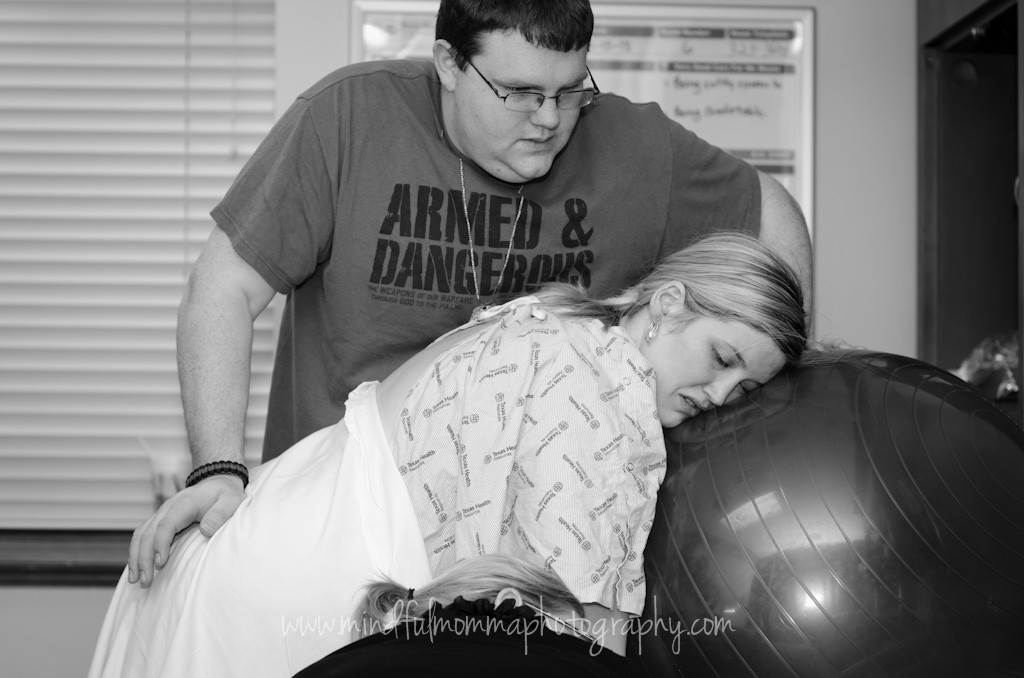What could go wrong?
Virtually all the studies except for the Term Breech Trial agree that there is a small, small increase in minor trauma and low apgar scores with vaginally born breeches. This increase may not be clinically significant. Here are some of the more serious concerns.
Head entrapment is when the baby’s head gets stuck after the body has descended. It isn’t always as dire a circumstance as it is portrayed, though it can definitely spell disaster. A practitioner skilled in breech knows a number of maneuvers to help. It happens for a few reasons:
1. The cervix is not fully dilated when you start pushing.
2. The baby has a hyper-extended head (either from your practitioner pulling on the baby or because it adopted that head position in the womb.)
3. The baby is too big for your pelvis (from what I can tell, this is truly rare).
4. There is a serious disparity between the size of the baby’s body and the size of the baby’s head (more of a concern with premature babies).
People often wonder with a butt-first baby: “Isn’t the diameter of the hips and the legs all squished together really big?” Actually in a full term healthy baby it is about the size of the head. A premature or growth restricted baby will have a small body and a comparably large head, making head entrapment a more risky complication.
One of the hard things about vaginal breech birth is making sure you don’t push until you are fully dilated; this is especially true of footlings. A provider who is especially skilled at assessing dilation and assisting breech is worth finding.
Cord prolapse happens when the umbilical cord falls out into your vagina before the baby is born. It usually happens when the water breaks and it gets swept out with the gush. It is very dangerous in most cases because the cord will be compressed too much during the birth/before the baby can be born. You are more likely to experience cord prolapse if you have had a baby before, if your breech is in a flexed position, if s/he is small, and especially if s/he is footling. A frank breech has almost the same rate of prolapse that a vertex baby has (.4%). This means that concern over possible cord prolapse in a Frank breech baby is unfounded. A complete breech has a 5-10% chance and a footling, 10-25%. In the TBT (big breech study), there were 14 cord prolapses, and none of them had adverse effects. Babies are designed to experience some cord compression. If it happens to you and you are at home, call 911 and adopt the knee/chest position. Try to keep the cord wet and keep air out of your vagina as best you can to prevent the cord from congealing.
Head moulding (baby’s, not yours : ) takes place as the baby descends, slowly adjusting the headbones to squeeze out safely. This also happens in head-down births. If you have a quick labor or push the baby out too fast, the baby’s head may not mould enough and result in bleeding in the baby’s skull. This can happen with any baby, but is a more likely risk when the head follows the body, as in breech. It is rare, and an experienced breech provider will help you push.
Internal organ injuries happen almost exclusively, it seems, with care providers who don’t know how to handle a breech baby as it is born. Rough handling or wrongly-executed maneuvers can cause internal damage to the baby.
Shoulder dystocia or Nuchal arms happen when the baby’s head and shoulders are stuck because of size, position, or arms being up around the back of the baby’s head. It is also not uncommon in regular, vertex births. Many breech practitioners who believe in hands off the breech discourage touching the baby’s body at all during birth for fear of activating the baby’s moro reflex which causes the baby to throw his arms up when startled. Trained doctors and midwives know how to release stuck arms and shoulders. Arms in front of the head are simpler to release than arms up behind the head.
The umbilical cord can be wrapped around the baby’s neck in any kind of baby, but in a head down baby it is sometimes unwrapped by the care provider as the head comes out. When the head follows the body this is not possible, though it doesn’t mean it is a problem. Also, you should know that it is impossible for your doctor to tell that the cord is wrapped around the baby’s neck from the ultrasound because you can’t see that kind of 3-D. It only appears to be near the head.
Death of the baby can occur because of one or more of these problems, but the compared likelihood to cesarean birth is hotly contested. Many do believe it is safer for the baby, depending on circumstances.
A note about footlings:
If your baby is a footling, it means his feet are presenting over your cervix. Perhaps he is kneeling and the feet are over the opening, or he is sitting somewhat cross legged (kindergarten style) and the feet are under the bum. Whatever the case, it looks like if you went into labor and opened up now, feet would come down. This is a contraindication for a lot of vaginal breech providers; they think it carries increased risk. However, the truth is that neither you nor your caregiver can truly diagnose footling presentation until labor begins. Often a footling will convert to a complete breech and come down butt-first once contractions begin. Keep this in mind when thinking about and discussing options.




